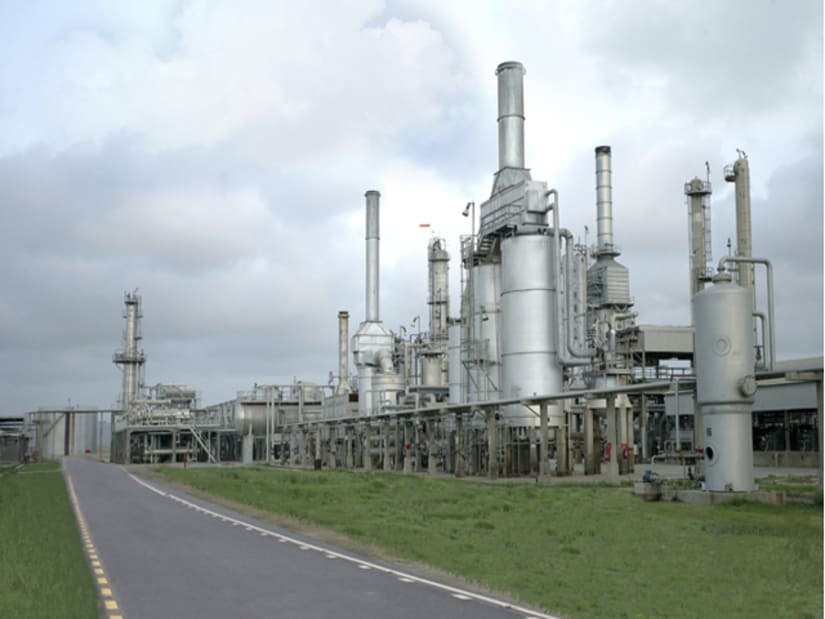The largest oil refinery in Pakistan closed its doors for about a week. Due to the unavailability of crude oil, in light of threats of an imminent collapse of the industry.
The Kenergico refinery, formerly known as Beco Petroleum, has been shut down and production will resume on February 10; In line with the schedule for the arrival of its crude oil tanker.
The shortage of the US dollar and the significant depreciation of the rupee affected the refinery’s ability to import crude, according to information seen by the specialized energy platform.
Pakistan’s largest oil refinery has installed a processing capacity of 156,000 barrels per day of crude oil, to produce gasoline, diesel and other oil products.
The company’s share price fell by 3.18%, or 0.13 rupees ($0.00047), and closed at 3.72 rupees ($0.013) with 7.49 million shares traded on the Pakistan Stock Exchange on Friday 3 February.
Closing losses
The largest oil refinery in Pakistan informed the stock market – in October 2022 – that the recent floods washed away the roads and bridges connecting the refinery to the markets.
It has adopted alternative methods, but this is causing huge losses, in addition to the losses incurred by the depreciation of the rupee, according to The Express Tribune.
The company recorded net sales of 52.7 billion rupees ($189.7 million) in the first quarter of the current fiscal year (from July to September), compared to 34.4 billion rupees ($123.8 million) in the same period last year. Which was due to the rise in oil prices and the sharp depreciation of the rupee.
The company said – in its report for the first quarter of the year -: “The decrease in the refinery’s productivity led to a total loss of 4.6 billion rupees ($ 16.6 million), compared to a total profit of 751 million rupees ($ 2.7 million) in the same period last year.”
Imminent collapse of the oil industry in Pakistan
For its part, the Oil Companies Advisory Council said – in a letter to the Oil and Gas Regulatory Authority – late last week, that “the industry is on the verge of collapse, if immediate steps are not taken with regard to financing financing to ensure imports.”
He added, “Due to the increase in oil prices and the successive depreciation of the Pakistani rupee over the past 18 months, the trade finance limits available from the banking sector have become insufficient.”
The letter also noted that “as a result of the recent devaluation alone, L/C/Import limits have shrunk overnight by 15-20%.”
According to the letter: “The banking sector is requested to immediately request through the Central Bank of Pakistan to strengthen the maximum limit of the member firms (including Kenergyco).”
“In order to ensure the right products are imported into the country, it is important to increase the trade finance/letter of credit limits for the industry in line with the current oil prices, exchange rate and volumes handled by each company,” she explained.
Financial crisis in Pakistan
In this context, oil companies in cash-strapped Pakistan have warned that the industry is on the verge of “collapse”, with the continuing dollar liquidity crisis and the cost of doing business due to the depreciation of the rupee.
The government raised the dollar ceiling to meet the request of the International Monetary Fund. As a result, the Pakistani rupee fell to a historic low of 276.58 rupees in the interbank market, according to The Economic Times.
The International Monetary Fund set several conditions for resuming the bailout plan. Including the market-determined exchange rate for the local currency and the easing of fuel subsidies, both of which have already been implemented by the government.
This comes at a time when Pakistan is facing a crisis in the balance of payments, and the depreciation of the local currency leads to a rise in the prices of imported goods.
Energy makes up a large portion of Pakistan’s import bill; Typically, the country meets more than a third of its annual energy demand using imported natural gas, which rose in price after Russia’s invasion of Ukraine.
Withdraw electricity subsidies in Pakistan
In this regard, Pakistan and the International Monetary Fund extended technical talks, after gaps remained in the areas of electricity, taxation and fiscal deficit, but the authorities showed willingness to cut all kinds of expenditures and withdraw some subsidies not included in the budget.
The government is preparing to take several measures. Among them is the withdrawal of general electricity subsidies for exporters; In addition to providing targeted support only linked to export revenues.
It may also cut the Public Sector Development Program and some security-related expenditures to pass minimal increases in electricity prices and taxes to the general public, according to information seen by the specialist energy platform, quoted by The Express Tribune.
In addition, there would be an increase in taxes and electricity prices to convince the International Monetary Fund to declare the ongoing talks a “success”.
Discussions are scheduled to continue until Monday, February 6, on areas where the IMF needs more clarity on the data, the local newspaper reported.
According to people familiar with these negotiations, the scope of the discussions has been narrowed to include the circular debt of the electricity sector and the resulting financial gap.
related topics..
Also read..

Leave a Reply